History in the making
People
For some it might seem macabre, but for Michelle Cormack there is nothing better than spending a morning roaming around St Joseph’s cemetery at Willunga, getting to know a little bit more about the people who helped shape the history of the region.
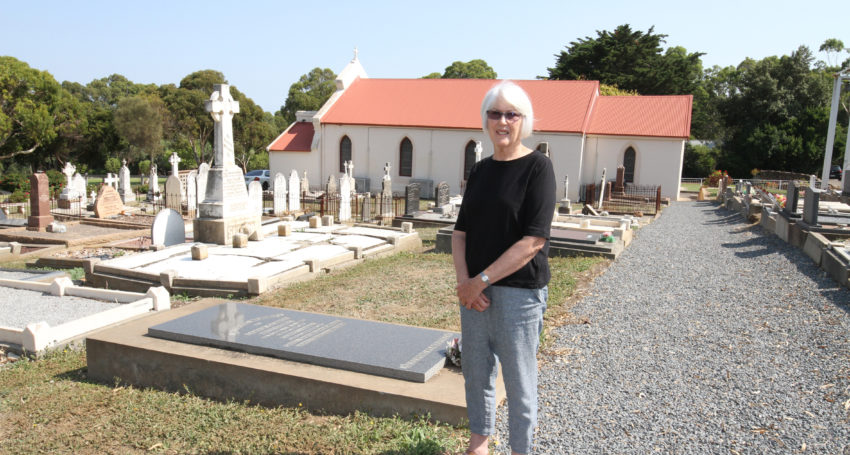
As volunteer archivist for the Willunga parish, the retired primary school teacher and former government social policy researcher is a font of knowledge when it comes to the parishioners who were the fabric of the local Catholic Church as far back as the 1850s.
And given the chance Michelle says there is a number of the faithful she would have loved to have met in person, rather than visiting their gravesite.
Advertisement
Take for example Thomas Skeyhill, the man who still has the honour of being Willunga’s oldest resident. Born in Ireland supposedly about 1793, Skeyhill immigrated to Australia in 1855 at an age “when most people would have thought of retiring to the grave”.
Upon his arrival he married Margaret, 39 years his junior, and he lived the rest of his days close to the Willunga township until succumbing to a severe attack of bronchitis at the grand old age of 108.
“Shortly after his marriage to Margaret they were burnt out and lost all their possessions, including 100 pounds of bank notes he had hidden in their thatched cottage,” Michelle recounts. “He lived in three different centuries and was the foster brother of Sir Dominic Daly, a governor of South Australia.”
Walking further through the cemetery, Michelle is keen to point out the Logan family grave.
“The Logans were very interesting but sadly through the 1860s their family life became a tragic story as they lost their four sons to respiratory diseases. The family gave their money to the church and were supporters of Catholic education and we now have the Logan Trust in their honour,” Michelle adds.
The story behind the Creedon family is another one sure to bring a tear to the eye. The two young men named on the headstone of their grandparents’ grave were killed in World War I, one at Fromelles and the other in the Somme. It took until 1925 for their mother Margaret to find out where her sons were buried overseas.
On a lighter note, Michelle recalls the story of coach driver Andy O’Brien who lived across the road from the presbytery and “whose horses got away from him on O’Halloran Hill”!
Since retiring from full time work in 2012, Michelle says she is fortunate to now have more time to learn about the lives of the region’s first parishioners and share her love of history with the community.
“It’s the stories that really interest me, sticky beaking around in newspapers,” she laughs.
“Trove has been very helpful, and The Southern Cross and other Adelaide newspapers are really good sources of information.”
She says her love of history was nurtured by her mum and dad who lost their own parents at a young age and wanted their family to know their origins.
“They were always interested in showing us where they came from and taking us to places where they used to live, places of importance. It’s really all about the stories that get passed down.”
Advertisement
Moving to Willunga with husband Rob in 1984, Michelle is an active member of the parish, serving as a reader and commentator at St Joseph’s and Mary of Galilee churches for many years. She still does relief teaching at Willunga Primary School, where both of her adult daughters are teachers and her grandchildren are students.
Sometimes she volunteers to take classes on history walks of the local area which she says is a great way to make the past “tangible” to the young.
A member of the local branch of the National Trust, Michelle is hosting a guided walk through St Joseph’s cemetery as part of History Month celebrations in May.
When she’s not answering requests for information from parishioners or writing a history column for the parish newsletter, Michelle is busy digitising the church’s records for births, deaths, marriages and baptisms that date back to the 1850s.
Even with the help of several other volunteers, Michelle says the project is likely to take years to complete but believes it is “absolutely important” this information is not lost.
The Archdiocese’s Archives Office is fully supportive of the project and has provided Michelle with information about handling old documents, how to store them and the regulations regarding when information can be released to the public.
While keen to acknowledge the efforts of many others who have contributed to documenting the history of the parish, Michelle says through her own research she has been “amazed” by the early settlers’ commitment to their faith.
“Doing this makes you think about these people’s enduring faith in the face of disaster and hardship, and also their action,” she says.
The expansion of the presbytery almost a century ago provides a great example of this. In 1920 parishioners decided they needed to “do up” the two roomed cottage and a builder was employed to put on four extra rooms. The parish priest then suggested a verandah was needed.
“One of my favourite photos is of Fr Fahey’s working group building the verandah. They wanted something done and they just did it, they got on with it.”
St Joseph’s Precinct Heritage Walk will be held on May 9 at 2pm. For more information and bookings go to the History Festival Program, to be released on April 4 or https://www.trybooking.com/
For more information about maintaining parish archives, contact Archdiocesan Archives Office manager Lucy Farrow at lfarrow@adelaide.catholic.org.au or 8210 8145.



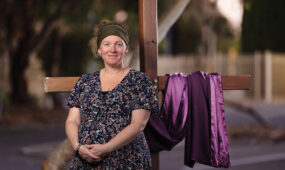
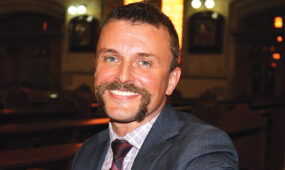
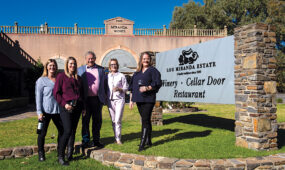
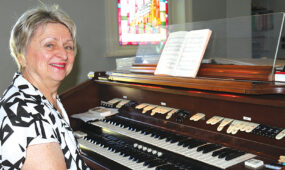

Comments
Show comments Hide comments